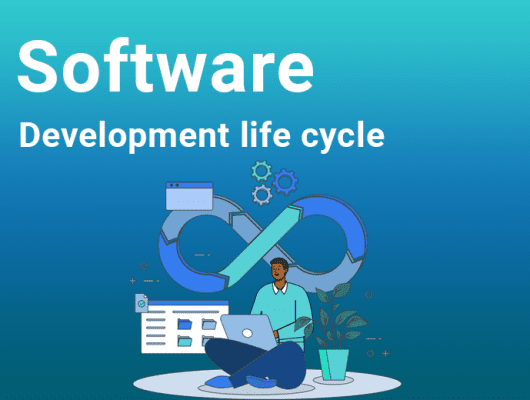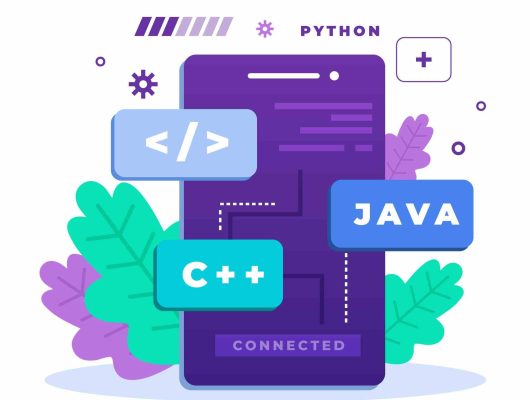
Budgeting Tips for Mobile app development projects l Hear From Expert
Nowadays, mobile applications are a flagship for businesses chasing expansion while improving existing connections with their customers. Nevertheless, building a mobile app demands a cautious approach and a well-defined budget. But sometimes, it also puts constraints on businesses, especially SMEs.
However, if you are struggling to budget your development project and looking for ways to do it right, then consider yourself lucky. You are on the right page.
This ultimate guide is about budgeting the mobile app development project. What are the essential tips to consider and how to manage them? So, without further ado, let’s begin.
Table of Contents
1.Why Do You Need To Plan Your Budget For Mobile App Development?

If a company wants to offer its services online and connect with customers through mobile devices, it must have a mobile app. Nearly 2,526 apps hit the Google Play Store daily, and more than 1,000 hit the Apple App Store.
But for company owners, releasing an app could seem like a thrilling journey. On the other hand, creating an app is no easy feat. It requires a significant investment of time and energy into research and development. From ideation to design and development, each phase has a significant impact on the mobile app development process cost.
Moreover, the mobile app development cost could shift depending on faulty assumptions and predictions. That means your spending plan will take a hit, too. Additionally, in many cases, the cost of developing a mobile app is too high for startups and small enterprises to pay.
Thus, to succeed, it is essential to assess the project thoroughly and allocate funds appropriately.
2. Top 10 Budgeting Tips For Mobile App Development

When you’re making plan to develop a mobile app development budget, it’s essential to keep in mind the following details
2.1. Determine the proper app goal
The initial step toward effectively utilizing the app budget is clearly articulating the app’s objectives. Therefore,
- Find out what your target is.
- Indicate what exactly you want your app to do.
- What do you need: more sales, better interaction between seller and customer,
- Do you provide a service or need to automate some of the internal operations?
By framing your project aims as clear and measurable goals, you can immediately align the scope of your business strategy.
Apart from that, while involving goals, be as specific, measurable, achievable, relevant, and time-certain (SMART) as you can be. For example, the objective might be to acquire 10,000 new users in the next six months after launching. Or you might have a 20% increase in the number of customers engaged in the first year.
Similarly, think of the strategic path for the app and how it is part of the organization’s larger goals and objectives. This surety will help you to be effective in the development and communication process.
2.2. Analyze your Target market
Analyzing the market is a vital activity to consider. So, research your competitors and your intended customers (target audience).
Find out what kind of apps these developers make. What are the main functions the apps provide? What are their assumptions on the qualities that a product should possess?
This research will give you the power to pinpoint the valuable features without wasting money.
Similarly, to run a good market research campaign, begin by specifying who your church is against and researching their services. Look at their app design, user interface, functionalities, and customer reviews. This will let you know what works and what doesn’t without affecting your app features.
2.3. Mobile Apps & Supporting Technology
The choice of a mobile operating system platform or mobile device significantly impacts mobile app development costs estimates. Whether an app is created exclusively for iOS or includes Android or another version, cost plays a determining factor when determining which exact device to support—iPhone, iPad, or tablet.
Moreover, orientations such as landscape to portrait or portrait to land appear on the app and costs. In addition, integrating extra hardware capabilities within apps incurs additional costs due to using Hardware capabilities in Apps, such as IoT apps.
Therefore, making a clear roadmap for your app is vital. So, consider the device and the technology solely to pen down the cost of a mobile app appropriately.
2.4. Breakdown of Costs
Plan the cost of your application development by following these factors.
- Development Costs: This is the backbone, which includes choosing a coding language, bugs fixing , and ensuring quality through rigorous testing.
- Design Costs: This is the area that attempts to develop a clean and user-friendly interface for the website. It contains both UI and UX designing of applications.
- Marketing Costs: Now we come to the point where marketing dollars will help your app reach a target audience and reach a higher visibility. Therefore, make sure that the marketing funds are equally distributed to advertising, digital marketing, public relations, and events. They encompass everything from ad campaigns to social media marketing to captivate and keep users engaged.
- Maintenance Costs: Operating the app properly consistently costs money. Therefore, constant monitoring, patch issuance, and application support are important.
2.5. Prioritizing Features
Begin with a simple starting point that entails a minimum set of features. This will not only attract your initial user base but also allow you to elicit feedback, thus helping you spend less and prioritize essential features.
Beyond this, use feedback from the MVP stage to strengthen and expand the app. By implementing such an approach, you can effectively conduct constant fine-tuning. Additionally, it helps you work on the features that users most desire.
Grow the application’s functionality according to users’ opinions and contacts with the market. This will help your app grow at unprecedented speed.
2.6. Choosing an Appropriate development model
Deciding which development method is optimal for the app is critical for the mobile app development company. Native applications, built to utilize one of the two operating systems, either iOS or Android, offer the highest performance and overall best user experience at a higher price.
On the other hand, the multiplatform and hybrid apps run on one code base that can operate on all the platforms. Thus, it cuts down both the costs and time programmers spend building the given type of app. Therefore, before beginning with your app development process; determine which platform will suit your development cost the most.
2.7. Focus on User Experience
Ease of use is the core of your app, encompassing all features. To improve the users’ experience, make sure that your app is easy to use and has a pleasant app design. The target design should be intuitive so that users can use or navigate through it at the same time.
To make your app stand out is a result of the feature you choose. But these features are what cost you the money. So, figure out those features that are fundamental to the main functions of our app.
This feature, on top of taking user satisfaction to the next level, becomes a critical factor contributing to lowering the initial tier of expenses by eliminating the eventuality of developing unnecessary features and functions.
2.8. Team Selection
Choosing the right team is crucial for your project’s success. You have several options: finding in-house developers, engaging firms for development, or using freelancers.
All of them come with their price, but at the same time, they exhibit certain features that make them a good and bad choice.
In-house teams are often seen to shape the company’s culture better and enhance ease of communication but are concurrent to incurring higher ongoing costs and administrative overhead.
On the other hand, outsourcing in a development agency could save managers time and allow them to have the finest body of men and very advanced technologies; however, it may also lead to poor integration and a lower direct impression of the project.
Similarly, freelancers are the most significant source of flexibility. Although they can be inexpensive, they may pose security risks and often not be equally high quality. Therefore, analyze the consequences of the manifestation of each option meticulously, considering factors such as scalability, safeguarding of intellectual property or the ability to instantly modify the solutions depending on the changes within your project.
Find out more about Factors effecting the cost of mobile app development
2.9. Choosing a Suitable Pricing Model
The correct pricing model will allow you to keep your budget in check because you are developing a product. Fixed pricing models will track the spending, thus simplifying budget preparation.
Nevertheless, such models are less suited for rapid and efficient changes. The “Pay by the hour” model can be costlier, but it allows for the continuous alterations of the functions and features. Remember that the model is most applicable when scoping the project if the changes are unclear or expected.
After all, your decision of the project totally depends on your budget’s ups and downs.
2.10. App Ongoing Maintenance and Updates
This includes stopping to follow-up on bugs after the launch, putting out new releases and enhancing any existing features.
This usually means the annual maintenance cost is 20% of the first development cost. These efforts towards continuous investment make it possible to use innovations and reviews, leading to a more competitive product.
Besides, it also prevents failures, reduces downtime, and consequently improves customer quality, which helps to increase user retention and satisfaction.
Conclusion
Planning appropriately is one of the succeeding factors in mobile app development. Establishing clear goals, budget estimation and cost management, choosing the appropriate approach, and preparing for post-release are the means to get the development of a project to completion within the budget.
But with these plans, you need to join hands with the proper app development agency. For its, consider OnyxTec, whose team of experts are capable of building within your budget without compromising the quality. So, what are you waiting for? Feel free to contact us as we are just one click app.
FAQ
1. What is the price of creating a mobile application?
Generally, developing an app costs between $20,000 and $200,000. However, complicated programs can cost $350,000 or more.
2. Should I hire inexpensive developers to save money?
Hiring low-cost developers is never a good way to save money. This is a significant no that will cost you a lot more money. It is better to work with the company that guarantees you proper app functionality under your budget.
3. How can I locate competent developers?
You can find excellent programmers at OnyxTec. This group of developers has in-depth knowledge of all the newest tech stacks.




